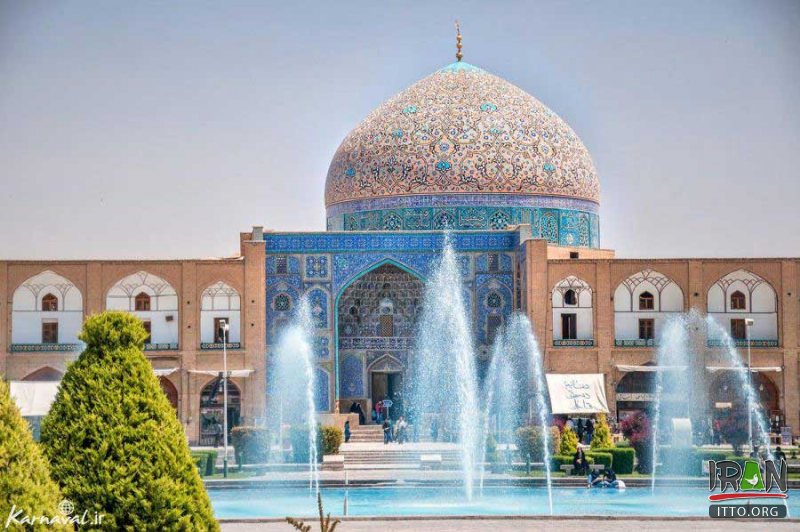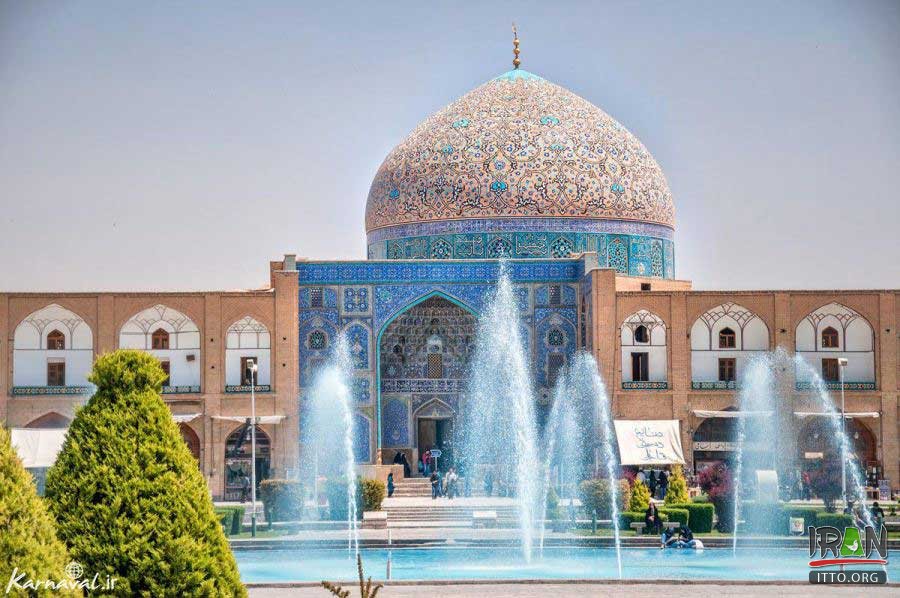Sheikh Lotfollah Mosque was built between 1603 and 1619 as a part of Naqsh-e Jahan Square complex by decision of Shah Abbas. Since Ali Qapu Palace, located on the west side of the square, was a residence of the Shah and his family, the complex needed a mosque that would be appropriate for the shah to pray and also add to the beauty and majesty of the square, apochi.com wrote.
Unlike the Imam Mosque, which was designed for prayers by the public, Sheikh Lotfollah Mosque was the private mosque for the family of Shah Abbas. The doors of the mosque were always closed and guarded, so ordinary people could just admire the mosque for centuries. To avoid being seen from Ali Qapu Palace while crossing the square to the mosque, Shah and his wives used a tunnel under the square.
Since Sheikh Lotfollah Mosque was designed as a private mosque, it is smaller than Imam Mosque, and has no minarets. In contrast, Naqsh-e Jahan Square, as the most important structures in Iran, does not face towards Mecca, so Sheikh Bahai, the chief architect of the project, faced a challenge while designing two mosques of the square.
Like Imam Mosque, Sheikh Lotfollah Mosque has an entrance portal that turns right, forcing the visitor to face towards Mecca on entering the mosque.
The paintings and interior tiles were made by Reza Abbasi, famous Iranian artist, and its quality and beauty overcome exceed anything created In Iran before. The walls, dome, entrances of the mosque are decorated with the so-called seven-color tiles, calligraphy, inscriptions of some chapters from Qur’an, names of Imams, and poetry.
Sheikh Lotfollah Mosque stands in the eastern part of Naqsh-e Jahan Square, which is located in the very center of Isfahan, surrounded by many other attractions.
The north end of the square through Qeisarie Gate turns to the Imperial Bazaar — the main bazaar of Isfahan. On the southern side of the square, there is a majestic Shah Mosque located. Within walking distance from the square, there are Shah Historical Bath, Chehel Sotoon Palace, and Hasht Behesht Palace. After a 20-minute walk, you will reach Si-o-Se Bridge.



